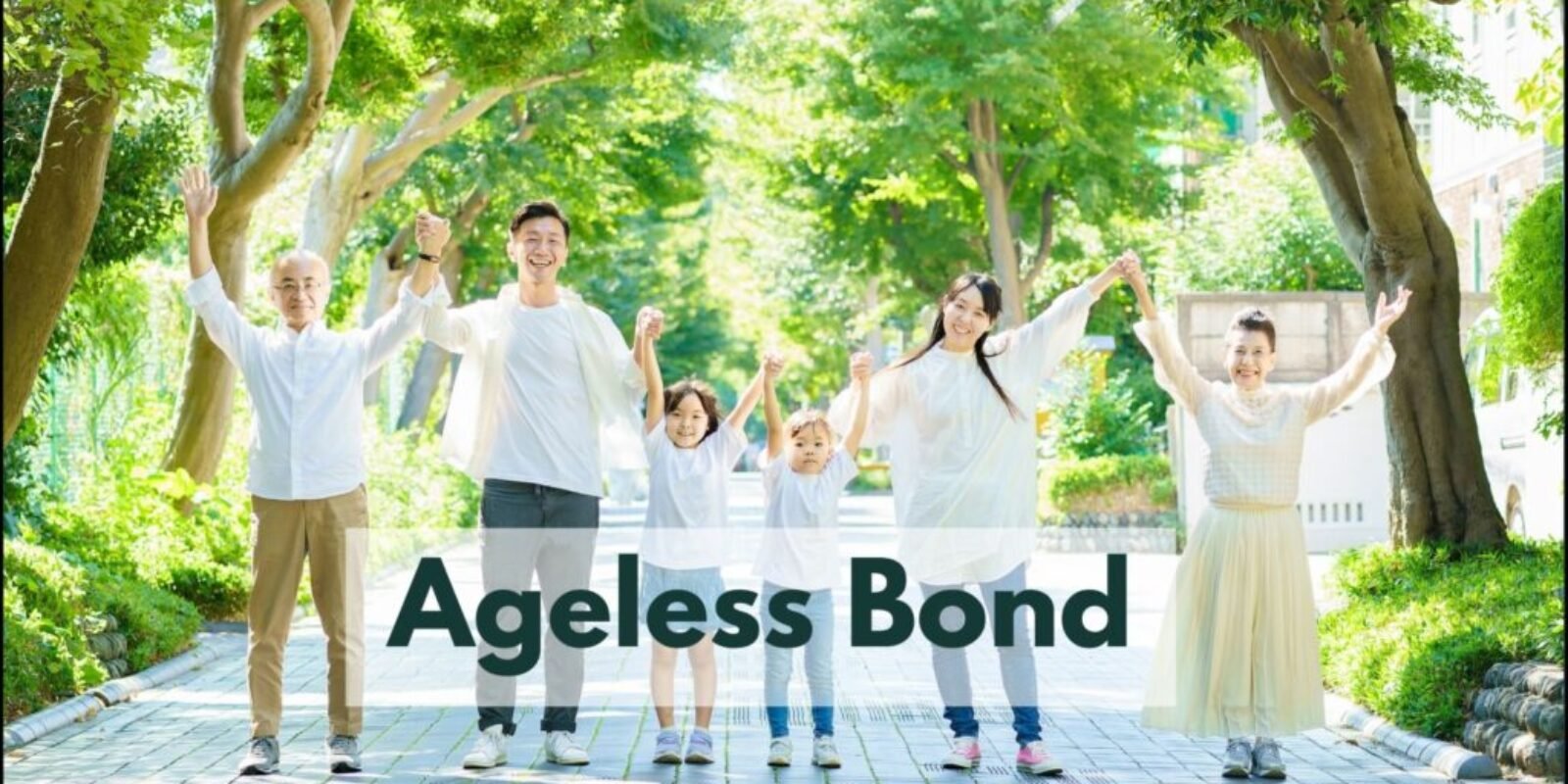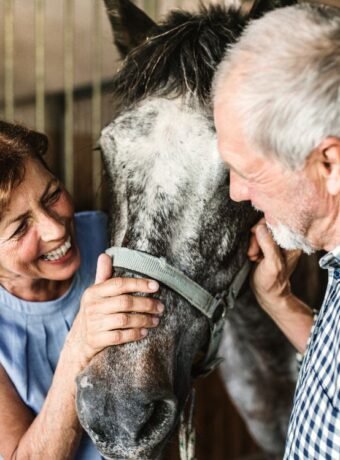Last Updated on June 30, 2025 by Julian Espinosa
Have you ever noticed how a conversation with someone from a different generation can completely shift your perspective? In our fast-paced, technology-driven world, meaningful connections between generations have become both more challenging and more essential than ever before.
Intergenerational bonds—the meaningful relationships we form with people significantly younger or older than ourselves—offer profound benefits that extend far beyond simple companionship. These connections serve as bridges across the generational divide, creating opportunities for wisdom sharing, mutual learning, and emotional enrichment that can transform lives at any age.
For seniors, these relationships provide a powerful antidote to social isolation, offering fresh perspectives and renewed sense of purpose. Meanwhile, younger generations gain invaluable insights from lived experience and wisdom that can’t be found in any textbook or online resource.
This comprehensive guide explores the science-backed benefits of intergenerational relationships, practical strategies for building these meaningful connections, and real-world examples of how different generations are coming together in homes, workplaces, and communities. You’ll discover how technology can enhance rather than hinder these bonds, learn to overcome common generational stereotypes, and find actionable steps to create lasting relationships that enrich your life and the lives of others.
Whether you’re looking to connect with younger family members, contribute your expertise in professional settings, or simply expand your social circle beyond your age group, the insights ahead will show you how intergenerational bonds can add depth, purpose, and joy to your daily life.
Understanding the Value of Intergenerational Bonds
Think about the most meaningful conversations you’ve had recently. Were they with people your own age, or did they span generations? In today’s world, we often find ourselves in age-segregated bubbles—senior centers, retirement communities, or social groups that naturally form around similar life stages. While these connections are valuable, something magical happens when we reach across generational lines.
Intergenerational bonds represent the meaningful relationships we build with people who are significantly younger or older than ourselves, outside of our immediate family circle. These connections have become increasingly rare in modern society, yet research shows they’re more beneficial than ever before.
Prefer to listen rather than read?
Consider how different today’s world is from just a few decades ago. In the early 1900s, multiple generations commonly lived and worked together. Grandparents, parents, and children shared the same roof, worked the same land, and learned from each other daily. One-room schoolhouses brought together learners of all ages, creating natural opportunities for knowledge exchange and mutual support.
The shift toward age segregation began with industrialization, as efficiency and specialization became priorities over community connections. This pattern has accelerated globally, particularly in economically developed nations. Today, many of us live in what sociologists call “age-segregated silos”—environments where we primarily interact with peers from our own generation.
But here’s what research is telling us: reconnecting across generations isn’t just nice to have—it’s essential for our wellbeing and society’s health.

Why Do Intergenerational Bonds Matter?
Recent studies reveal alarming trends in social isolation, particularly among mature adults. The Harvard Study of Adult Development, which has followed participants for over 80 years, consistently shows that people with strong intergenerational connections report higher life satisfaction and better physical health outcomes.
Social isolation affects more than just emotional wellbeing. Research published in major medical journals links loneliness to increased risks of cardiovascular disease, cognitive decline, and immune system dysfunction. When seniors maintain meaningful relationships across age groups, they experience what researchers call “social resilience”the ability to adapt and thrive despite life’s inevitable changes.
But the benefits flow in both directions. Younger people who engage regularly with mature adults develop what psychologists term “developmental perspective”a clearer understanding of life’s stages and transitions. This knowledge helps them make better decisions about their own futures and develops empathy that serves them throughout their lives.
“When you separate people into different age groups, you don’t get a sense of what a whole life looks like in its varying chapters,” explains Marc Freedman, founder of CoGenerate, a nonprofit organization that fosters intergenerational connections.
The wisdom transfer that occurs in these relationships is irreplaceable. While younger generations bring fresh perspectives on technology and current trends, mature adults offer something equally valuable: the long view of life, tested strategies for overcoming challenges, and the kind of wisdom that only comes from lived experience.
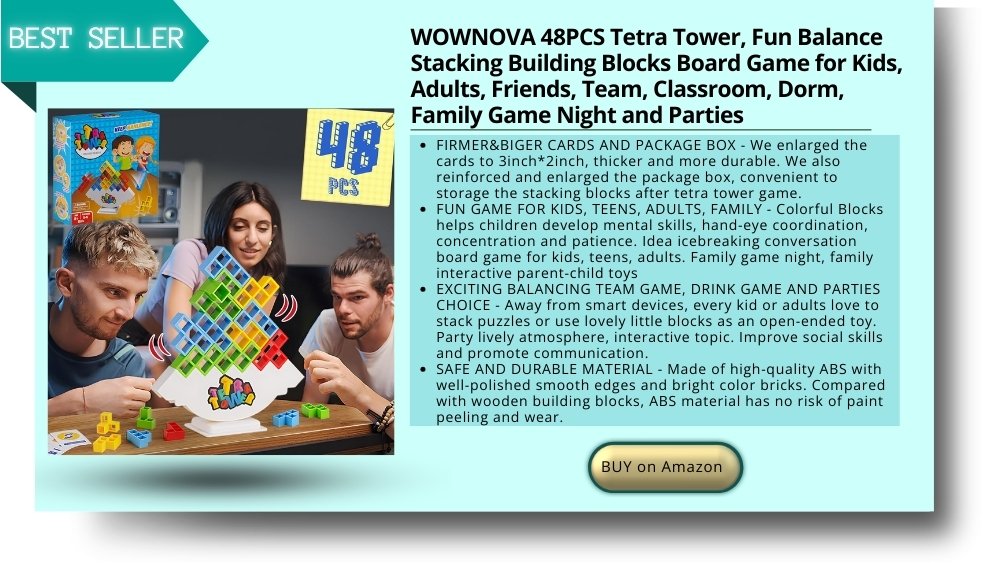
The Technology Bridge: Connection Tool or Barrier?
Technology presents both opportunities and challenges for intergenerational relationships. While some worry that digital devices create distance between generations, savvy seniors are discovering how technology can actually enhance their connections with younger people.
Video calling platforms allow grandparents to maintain daily contact with grandchildren across continents. Social media creates opportunities to share interests and stay current with younger family members’ lives. Online communities bring together people of all ages around shared hobbies, causes, or interests.
The key lies in approaching technology as a tool for connection rather than a replacement for face-to-face interaction. When used thoughtfully, digital platforms can supplement and strengthen in-person relationships, creating multiple touchpoints for ongoing communication and shared experiences.
Consider learning one new technology skill each month—perhaps video calling, photo sharing, or joining an online group related to your interests. This not only keeps you connected but also provides natural conversation starters with tech-savvy younger people who are often delighted to share their knowledge.

Breaking Down the Stereotype Barriers
One of the biggest obstacles to intergenerational connection is the prevalence of age-based stereotypes. These assumptions work both ways: younger people may view seniors as inflexible or out of touch, while mature adults might see younger generations as entitled or lacking in work ethic.
These stereotypes are not only unfair—they’re also demonstrably false. Research consistently shows tremendous diversity within every age group. Some seniors embrace new technology more readily than some younger people, while many younger individuals demonstrate remarkable dedication and traditional values.
The antidote to stereotypes is simple: genuine conversation and shared experiences. When we take time to listen to individual stories and perspectives, preconceived notions quickly dissolve. Active listening—giving full attention to understanding another person’s viewpoint without immediately judging or responding—becomes crucial for building authentic connections across generations.
Try this approach: instead of making assumptions based on age, ask open-ended questions about experiences, perspectives, and interests. You might be surprised by the common ground you discover and the unique insights you gain from people whose life experiences differ from your own.
The Impact of Technology on Intergenerational Relationships
The advent of technology has revolutionized the way we communicate and connect with one another. While it has brought many advantages, it has also posed challenges to intergenerational bonds.
In some cases, technology can create a sense of disconnection between generations, as virtual exchanges may replace face-to-face interactions.
Technology can help bridge the generation gap by allowing grandparents and grandchildren to connect through video calls and online communities, despite being far apart. They can share stories and experiences in real-time, building and strengthening their relationship.
It is crucial to strike a balance between using technology to enhance intergenerational bonds while recognizing the value of in-person interactions that foster deeper emotional bonds.
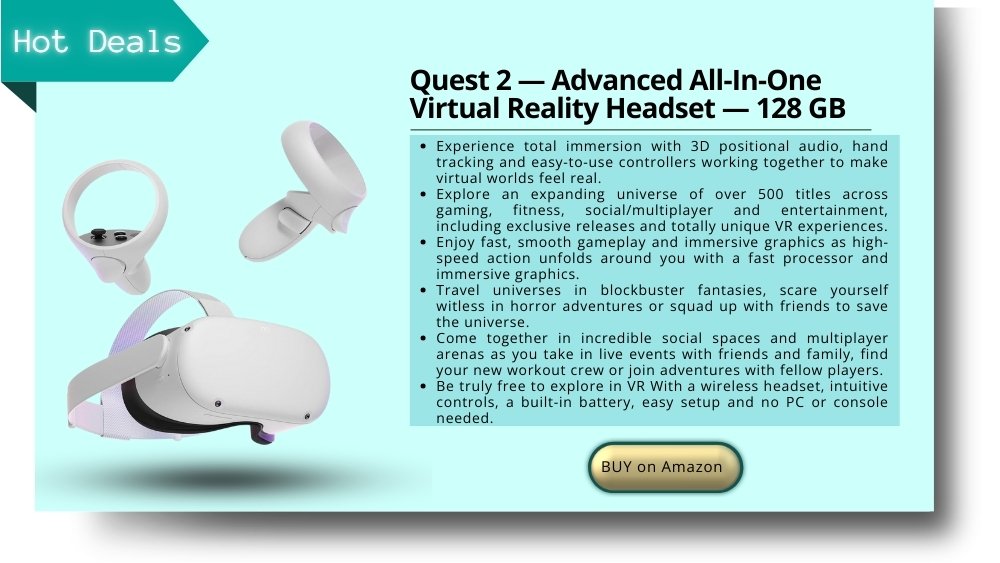
The Benefits of Connecting Different Generations
The benefits of intergenerational bonds are far-reaching and extend beyond individual relationships. When different generations come together, they form a cohesive fabric that strengthens the social fabric of a community and society as a whole.
One of the most significant advantages of intergenerational bonds is the exchange of knowledge and skills. Younger generations can learn from the wisdom and experience of their elders, while older individuals can benefit from the fresh perspectives and innovative ideas of the youth.
Intergenerational connections also promote emotional well-being. The seniors, who may experience feelings of loneliness and isolation, find companionship and support in the company of younger individuals.
Similarly, the youth gain a sense of belonging and stability when they engage with their elders, creating a sense of interdependence that fosters emotional resilience.
Furthermore, intergenerational bonds contribute to social cohesion and understanding. When individuals from different age groups come together, they become more tolerant and empathetic towards each other’s challenges and aspirations. This increased understanding leads to a more inclusive and compassionate society.
Creating Age-Friendly Communities
The most successful intergenerational connections often happen in environments designed to bring different age groups together. Age-friendly communities are recognizing that mixing generations benefits everyone involved.
Community centers increasingly offer programs that pair seniors with younger volunteers for mutual learning experiences. Public spaces like parks and libraries are designing areas that naturally encourage interaction between different age groups. Some innovative housing developments intentionally create mixed-age environments where residents of all stages of life live side by side.
These settings provide natural opportunities for connection through shared activities, common interests, and mutual support. When seniors engage in community programs that include younger participants, they often feel more energized and purposeful. Meanwhile, younger community members gain valuable mentorship and perspective.
Look for opportunities in your own community to participate in mixed-age activities. This might include volunteering at schools, joining community garden projects, participating in local government meetings, or attending cultural events that draw diverse audiences.

Intergenerational bonds offer extensive benefits that go beyond individual relationships.
The Workplace Revolution: Generations Learning Together
Modern workplaces are experiencing an unprecedented age diversity, with up to five generations working side by side. This creates unique opportunities for knowledge exchange and mutual mentorship.
Mature workers bring irreplaceable institutional knowledge, problem-solving skills honed by experience, and strong work ethics. They often excel at relationship building, project management, and strategic thinking. Younger colleagues contribute technological expertise, fresh perspectives on innovation, and energy for change and adaptation.
The most successful organizations are creating formal mentorship programs that work both ways—traditional mentoring where experienced workers guide newcomers, and “reverse mentoring” where younger employees share technological skills and current trends with more experienced colleagues.
If you’re still working or considering returning to work, embrace opportunities to both teach and learn from colleagues of different ages. This knowledge exchange creates stronger teams and can reinvigorate your professional passion and skills.
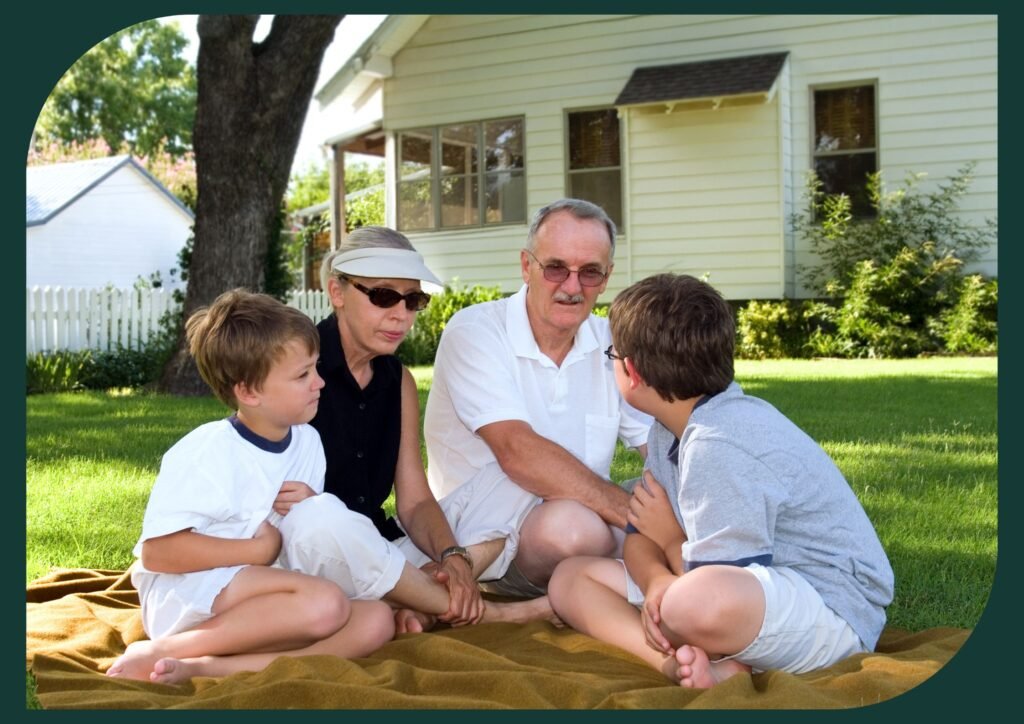
Practical Steps for Building Meaningful Connections
Building intergenerational relationships requires intentional effort, but the rewards make it worthwhile. Here are proven strategies for creating and nurturing these valuable connections:
- Start with shared interests: Join groups or activities based on hobbies, causes, or interests rather than age. Book clubs, gardening groups, volunteer organizations, and hobby clubs naturally bring together people of various ages around common passions.
- Embrace teaching opportunities: Share your skills and knowledge with younger people. This might involve formal volunteer work, informal mentoring, or simply being available to answer questions and provide guidance when asked.
- Stay curious about different perspectives: Ask questions about how younger people approach problems, what they find challenging, and what excites them about the future. Genuine curiosity opens doors to meaningful conversation.
- Use technology as a bridge: Learn enough about current technology and social media to communicate with younger family members and friends on their preferred platforms, while also introducing them to your preferred methods of communication.
- Participate in community events: Attend local festivals, cultural events, and community meetings where you’ll naturally encounter people of all ages. These shared experiences provide natural conversation starters and opportunities for ongoing connection.
- Consider intergenerational housing or programs: Explore living arrangements or programs specifically designed to bring different generations together, such as shared housing initiatives or intergenerational learning programs.
Social Impact: Building Inclusive Communities
Age-friendly communities actively encourage intergenerational interactions by creating spaces and initiatives that foster connection among people of all ages.
Parks, community centres, and public events are pivotal as dynamic platforms that facilitate meaningful intergenerational bonds. In these welcoming spaces, young and old find common ground, sharing insights, experiences, and stories that bridge the generational gap.
Through shared activities and conversations, the wisdom of the elderly combines with the fresh perspectives of the youth, fostering an environment of mutual learning and respect. These interactions cultivate understanding and lasting relationships that transcend age barriers.
As a result, these communal settings contribute to creating vibrant, inclusive communities where connections flourish, enriching the lives of individuals of all ages.
Addressing Social Isolation
Social isolation among seniors is a pressing concern, but intergenerational bonds offer a promising solution. In age-friendly communities, fostering interactions between the younger and senior generations becomes a powerful tool for addressing this issue.
By facilitating connections, these communities mitigate the effects of loneliness, offering emotional solace and companionship to seniors. These intergenerational bonds not only uplift spirits but also contribute to improved mental and emotional well-being.
Through shared experiences and meaningful conversations, seniors regain a sense of purpose and belonging, ultimately enhancing their overall quality of life. The young provide essential social support, creating a nurturing environment that underscores the importance of interconnectedness across different stages of life.

Impact That Brings Different Age Groups Together
Community programs that bring together individuals from diverse age groups profoundly impact society. These initiatives, rooted in collaboration, instigate a ripple effect of positive change. Through these programs, older and younger community members gain insight into each other’s unique strengths, skills, and life journeys.
This mutual understanding fosters a deep empathy, breaking down generational barriers and creating a shared sense of identity. As these connections flourish, a tangible sense of belonging and unity takes root, reinforcing the community’s bonds. This cohesiveness not only enriches the lives of individuals but also contributes to the collective well-being of the entire society.

Fostering a Diverse and Inclusive Work Environment Across Generations
Creating a diverse and inclusive workplace that transcends age barriers is essential for unlocking the full potential of ageless bonds. Embracing individuals from various generations cultivates a rich tapestry of perspectives, experiences, and insights.
This diversity not only enhances creativity and problem-solving but also nurtures an environment where each member is valued for their unique contributions, fostering mutual respect and understanding.
The Advantages of Multi-Generational Teams in the Workplace
Multi-generational teams offer a treasure trove of advantages that propel an organization forward. Combining the wisdom of senior employees with the innovative ideas of younger staff results in a dynamic synergy that fuels innovation and growth.
Each generation brings distinct skills, technological proficiency, and a unique approach to collaboration, resulting in holistic and well-rounded solutions to complex challenges.
Mentorship Programs and Knowledge Sharing for Professional Growth
Mentorship programs play a pivotal role as bridges that seamlessly connect the diverse generations present within a workplace. These programs create an invaluable channel through which seasoned senior employees generously share their wisdom, experience, and expertise with their younger counterparts. This passing of the torch not only imparts essential knowledge but also nurtures the professional growth of the next generation.
However, mentorship is not a one-way street. Younger employees bring fresh perspectives, cutting-edge insights, and an innate understanding of the ever-evolving technological landscape. These contributions invigorate the workplace’s approach, sparking innovation and novel strategies.
The symbiotic exchange of knowledge and perspectives generates a culture of continuous learning and adaptability. It transforms the workplace into an environment where skills and insights are not merely held but actively shared and cultivated.
As a result, the organization becomes more resilient, agile, and forward-thinking, adapting seamlessly to the shifting demands of the business landscape. This rich exchange fortifies the workplace and nurtures a sense of unity and camaraderie, solidifying the ageless bonds that extend beyond generations.
The Ripple Effect: How Your Connections Impact Society
When you build meaningful relationships across generations, the benefits extend far beyond your personal experience. These connections contribute to stronger, more cohesive communities and help combat the age segregation that is so common in modern society.
Children and young adults with positive relationships with seniors develop greater respect for aging and better understanding of life’s continuity. They’re more likely to value wisdom and experience, and less likely to fear their aging process.
Communities with strong intergenerational connections show lower rates of age discrimination, better support systems for all residents, and more effective problem-solving approaches that draw on diverse perspectives and experiences.
Your efforts to connect across generations inspire others to do the same, creating a positive ripple effect that strengthens the social fabric of your community and society as a whole.

Conclusion
The beauty of intergenerational bonds lies not just in what we give or receive, but in the mutual enrichment that occurs when different generations come together with open hearts and minds. These connections remind us that age is just one aspect of who we are, and that wisdom, curiosity, and the capacity for growth exist at every stage of life.
Do you have meaningful relationships with people from different generations? What steps might you take to build new intergenerational connections in your community? We’d love to hear about your experiences and ideas in the comments below. Your insights might inspire others to reach across generational lines and discover the joy of these special relationships.
FAQ: Intergenerational Bonds
- How do I start a conversation with someone from a different generation without seeming intrusive?
- Begin with neutral topics like current events, shared activities, or the environment you’re both in. Ask open-ended questions about their perspectives or experiences. Most people enjoy sharing their knowledge when approached with genuine curiosity and respect.
- What if I don’t understand the technology that younger people use?
- Don’t let technology intimidate you. Ask for help—most younger people are happy to teach what they know. Master one platform or app before moving on. Remember, you have valuable knowledge to share in return.
- How can I contribute to intergenerational relationships if I feel I don’t have much to offer?
- Everyone has unique experiences, skills, and perspectives to share. Your life experience, problem-solving abilities, and historical perspective are incredibly valuable to younger generations. Sometimes, just being a good listener is the greatest gift you can offer.
- Are there safety considerations when building relationships with much younger people?
- As with any new relationship, use common sense. Meet in public places initially, trust your instincts, and be cautious about sharing personal information too quickly. Most intergenerational relationships develop naturally through shared activities and mutual acquaintances.
- What if I encounter age discrimination or stereotypes?
- Address stereotypes calmly by sharing your actual experiences and perspectives. Sometimes people need time to move beyond their assumptions. Focus on building relationships with those who are open-minded, and don’t let negative encounters discourage you from forming positive connections.
- How can I find intergenerational programs in my community?
- Contact your local library, community center, senior center, and volunteer organizations. Many areas have intergenerational housing programs, mentorship opportunities, and mixed-age activity groups. Online community boards and social media groups can also help you discover local opportunities.
- What’s the difference between intergenerational relationships and simply being friendly with neighbors of different ages?
- Intergenerational relationships involve ongoing, meaningful exchange—sharing experiences, learning from each other, and providing mutual support. While friendly neighbor relationships are valuable, intergenerational bonds go deeper and typically involve regular interaction and genuine care for each other’s wellbeing.
REFERENCES
- Harvard Study of Adult Development – Harvard Medical School
- Freedman, M. (2023). CoGenerate: Building Intergenerational Communities
- American Association of Retired Persons (AARP) – Social Isolation Research
- Journal of Intergenerational Relationships – Recent studies on cross-age connections
- National Institute on Aging – Social connections and health outcomes
- Age-Friendly Community Research – World Health Organization
